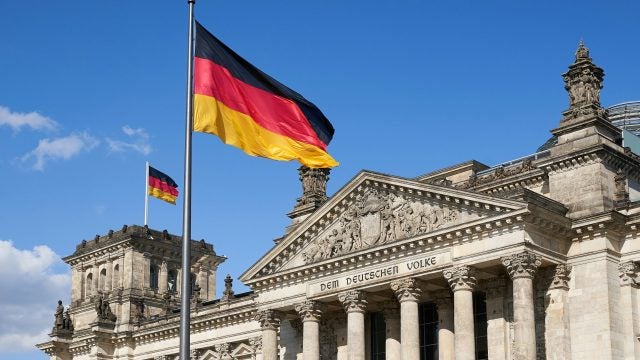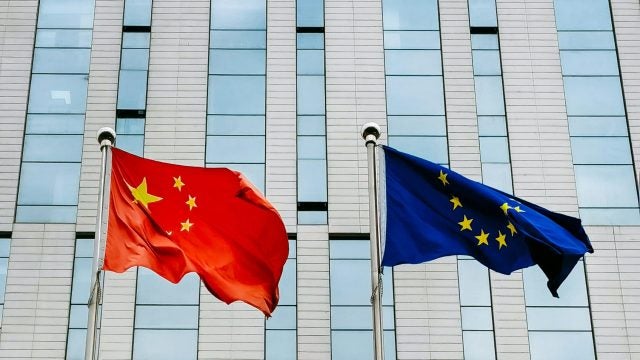Title: Puerto Rico Can Emerge Stronger; But It Needs Help
The island of Puerto Rico is in trouble, and it has been for some time. The US territory has a fiscal deficit worse than many third world countries and a list of economic and political problems to match. The uncertainty facing its some 3.2 million residents and those restoring normality is not conducive to the stimulation of prolonged growth. Puerto Rico can, and will, emerge stronger; but it’s going to need a lot of support.
The tiny Caribbean island of Puerto Rico is on the rocks. Recent spikes in COVID-19 cases and deaths have forced the island to close beaches and limit visitors. The island is also still struggling to rebuild after the devastation of Hurricane Maria in 2017, a disaster that killed nearly 3,000 people and all but wiped out its power grid.
Declining living conditions also mean that the population is both aging and decreasing as the young and talented flock to the United States mainland. On top of pre-existing widespread poverty, this means that social spending on areas like Medicaid and Medicare is at an all-time high all while the tax base shrinks.
Add to this a debt crisis of staggering dimensions. Tax breaks offered to investors in Puerto Rican municipal bonds led to gross overselling, and the island found itself significantly indebted with no means of repayment. Combined debt obligations and pensions totaled 119 billion USD in 2019 dollars, just under seventy percent of GDP.
Credit agency Moody’s currently rates Puerto Rico at Caa3 –its lowest rating for bonds not in default–citing “years of structural imbalance, remaining extensive damage from natural disasters and ongoing restructuring efforts,” which suggests that there is little prospect of recovery of principal and interest.
Empty promises
It’s fairly clear that the island is in dire need of assistance. However, a lack of statehood means that the US federal government is able to all but ignore these plights when allocating funding, leaving the onus on the diminished Puerto Rican coffers. Those tasked with fixing these problems seem only to be making matters worse.
In May 2017 the island invoked Title III of the Puerto Rico Oversight Management and Economic Stability Act (PROMESA). Closely resembling Chapter Nine of the US Bankruptcy Code, PROMESA established a federal oversight board to govern the island, introduced a process for overseeing the bankruptcy and restructuring proceedings, and provided a pathway for much needed infrastructural improvements.
Although developed to help Puerto Rico address its concerns, PROMESA has only exacerbated problems. It slashed public spending, and its austerity measures led to mass protesting in May 2018. Fixing the economy does not appear to be the board’s focus; instead, the board is focused on determining how to structure a payments program for the debt’s manifold creditors with little concern of the fiscal realities repayments of that size would have on the island’s overburdened economy. Negotiations are ongoing and heated.
This February, an initial debt restructuring agreement was reached between debt holders and PROMESA that would reduce the island’s debt burden by thirty-five billion USD, a haircut of around fifty percent if enacted. This is certainly welcomed progress, but an agreement is far from being ratified and many with vested interests are opposing the deal.
In the months and years that followed the installation of PROMESA, there have been countless calls to abandon the program, to alter it, to replace the governors, and to do anything to stop it from functioning as it is now.
There has been significant trench warfare between the Commonwealth’s democratically elected government and its installed board of governors, which has been unhelpful to Puerto Rico’s overall regeneration. As a bi-partisan legislation, PROMESA’s original intention was to install stability and cooperation on the island. Two groups working hand in hand with one motive.
Rip it up and start again
Given this catastrophic state of affairs, the question that is not asked enough–if at all–is how the island will be able to emerge as an economically stable entity with long term stability in its sights.
When researching this piece, it appeared that–even among the most engaged in the island’s governance, debt restructuring, bankruptcy, power grid overhaul, and economic renewal–very few have the long term wellbeing of the island’s population at heart.
Conversations center on how the island is going to be able to structure its fiscal deficit sufficiently to pay back the long line of perseverant creditors waiting in line for payouts. There is very little mention of the humanitarian issues at stake. Tens of thousands of citizens are living in situations widely considered to be inhumane and befitting of a third world economy – right under the nose of a country that claims regularly to be the best place in the world, not to mention the world’s largest economy.
Forgive, and forget
Arguably, the cause for Puerto Rico’s obscene debt obligations was tax breaks designed to attract US investors, which – due in part to a lack of foresight – plunged the island’s municipal bond system into a serious deficit.
For this reason alone, debt forgiveness would be a gracious solution. Not to mention that the original motive for giving US citizenship to inhabitants in the first place was arguably to allow President Woodrow Wilson the means to forcibly draft 20,000 nationals to the US army to help fight World War One.
Two years ago, a group of senators and then-presidential candidates, Elizabeth Warren, Bernie Sanders, Kirsten Gillibrand, as well as vice presidential nominee Kamala Harris, introduced the U.S. Territorial Relief Act of 2018. The Act called for debt forgiveness for the island if certain criteria were met, all but wiping out its seventy billion USD in debt obligations. As the bill states:
“Puerto Rico was already being squeezed before Hurricane Maria hit and will now have to rebuild under the weight of crushing debt,” said Warren at the time. “Our bill will give territories that have suffered an extraordinary crisis a route to comprehensive debt relief and a chance to get back on their feet.”
The bill went nowhere. A Biden-Harris administration may well see it resurface. Presidential nominee Joe Biden backs statehood for Puerto Rico, and argued that the island should not have been treated differently to any other state in the aftermath of Hurricane Maria. This level of support, coupled with Harris’s staunch belief that Puerto Ricans are Americans, could well see the bill resurface and serve as a precursor to some level of debt forgiveness for the island.
Debt forgiveness would allow Puerto Rico some breathing room. If it were allowed to function as a normal economy without crippling debt, Puerto Rico may have a fighting chance at emerging as a functioning society.
Allowing the island to be master of its own fate is one thing, but its residents and overseas allies must continue to do everything possible to keep the island afloat in the short term. Widespread corruption, on both sides, must be addressed and prevented. Both PROMESA and the island’s own government have both been accused of putting political agendas ahead of progress, and they have also been found to use money earmarked for urban and social regeneration elsewhere. In August 2019, the island had three separate governors in one week following the resignation of Ricardo Rosselló as a result of corrupt practice.
Another way Puerto Rico could help lift itself into stability is through the reinforcement of its position as a big pharma powerhouse. The island already has a significant presence of pharmaceutical companies, boasting some twelve of the twenty highest-grossing companies in the world, but is looking to attract more.
Relocating big pharma to the island would not only help the Puerto Rican economy, but also help the United States in its ongoing trade war with China. As the trade war worsens and general concern about global supply chains reliance on Chinese manufacturing is heightened, the United States continues to push for greater domestic production.
Some have suggested reintroducing tax breaks to attract pharmaceutical companies looking to relocate, but a more pressing concern is fixing the island’s damaged energy grid.
Many remain confident that the island will be able to emerge from its manifold problems as the vibrant and sunny place it once was. But it needs some help, not only from those parties on the outside with enough power to stimulate change but from those on the island in a position to fight for it. Something has to give.
. . .
John Crabb is the Americas editor at International Financial Law Review and Practice Insight, regularly covering issues of international sovereign debt and other areas of capital markets and banking law. John is based in Brooklyn, New York but originally from Scotland, receiving his undergraduate in PPE from the University of Exeter.
Recommended Articles

This article contends that South Africa’s 2025 G20 presidency presents a critical opening to shape governance of critical mineral supply chains, essential for renewable energy, digital economies, and national…

Germany’s economy is being throttled by a more competitive China that has usurped its previous manufacturing dominance in many industries. In response, Germany has doubled down on the China bet…

In 2021, the European Union (EU) attempted to assert itself in the Indo-Pacific arena to increase its geopolitical relevance by releasing an ambitious and multifaceted Indo-Pacific Strategy. However, findings from…